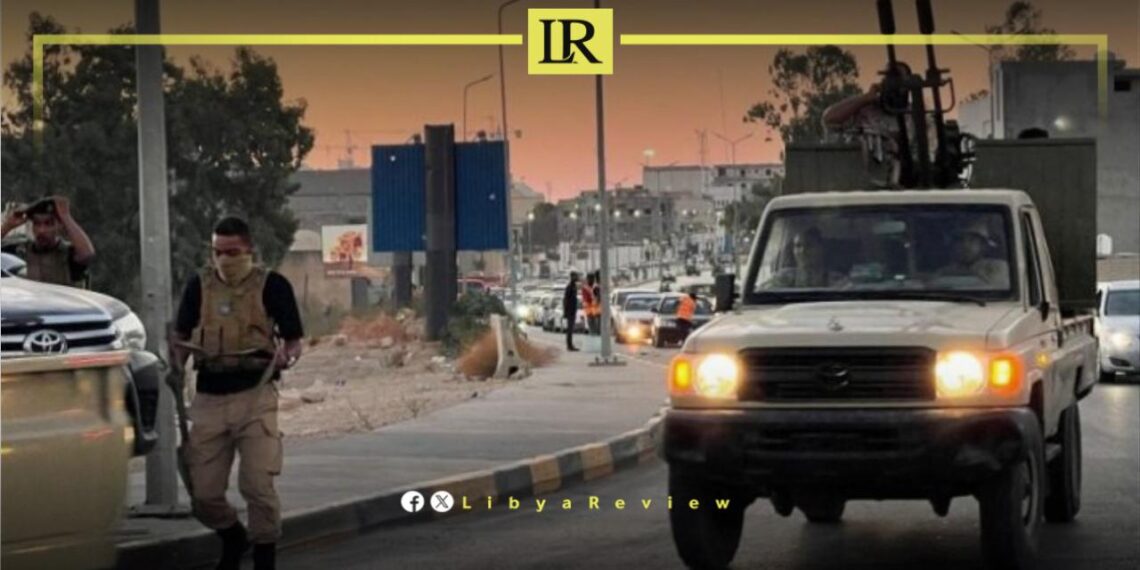A significant military mobilization swept through various districts of Tripoli on Saturday, as tensions escalated following violent clashes in the eastern part of the Libyan capital. The unrest began earlier that day with a fierce confrontation between the Rahbat al-Duru’ Brigade and the Joint Operations Force from Misrata.
The conflict was sparked by an attack carried out by the Rahbat al-Duru’ Brigade on a facility belonging to the Joint Operations Force in Tajoura on Friday.
The violent exchange resulted in at least nine deaths and 16 injuries, according to official figures released by Tripoli’s Ambulance and Emergency Service. The service, in a statement on its official Facebook page, confirmed the casualty numbers but did not clarify whether the victims were civilians or combatants.
In response to the escalating situation, the service issued a public warning, advising residents to avoid the coastal road in Tajoura and recommending the use of Wadi al-Rabie Road as an alternative route.
The clashes are part of a broader pattern of instability that has plagued Tripoli and its surrounding areas for years. Since the fall of Muammar Gaddafi in 2011, the Libyan capital has been under the control of various armed militias, each aligned with different political factions and often engaged in violent struggles for territorial dominance, influence, and resources.
The Rahbat al-Duru’ Brigade, also known as the “Shield Battalion,” is one of the many militias operating in Tripoli. It has been involved in several confrontations with other groups, including the Joint Operations Force from Misrata, which is recognized as one of the more powerful and organized militias in western Libya.
The attack on the Joint Operations Force’s facility in Tajoura marks a significant escalation in the rivalry between these groups. While the exact reasons for the assault remain unclear, such incidents are frequently tied to disputes over local authority or retaliatory actions linked to previous conflicts.
The widespread military mobilization in Tripoli signals a potentially dangerous escalation in the city’s ongoing security crisis. With multiple armed groups involved, each pursuing its own agenda, the risk of further violence spreading beyond Tajoura to other parts of the capital is high.
The city’s residents, who have long endured periodic bouts of violence, are once again at risk of being caught in the crossfire. The warning issued by the Ambulance and Emergency Service underscores the immediate dangers posed by the current situation.
These clashes in Tripoli reflect the broader struggle for power and stability that has gripped Libya since the 2011 uprising. Despite various international efforts to broker peace, including initiatives led by the United Nations, the situation remains volatile.
The ongoing conflict in Tripoli highlights the fragility of current ceasefire agreements and the considerable challenges to achieving lasting peace in Libya. As tensions continue to rise, the potential for further escalation looms large, with significant implications for the stability of both Tripoli and the wider region.


